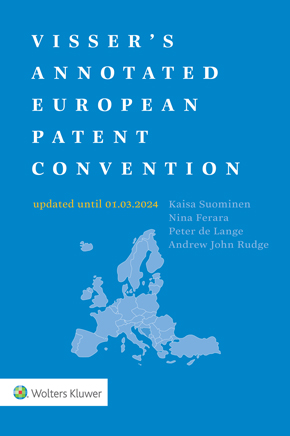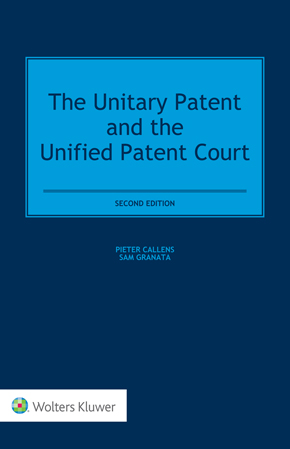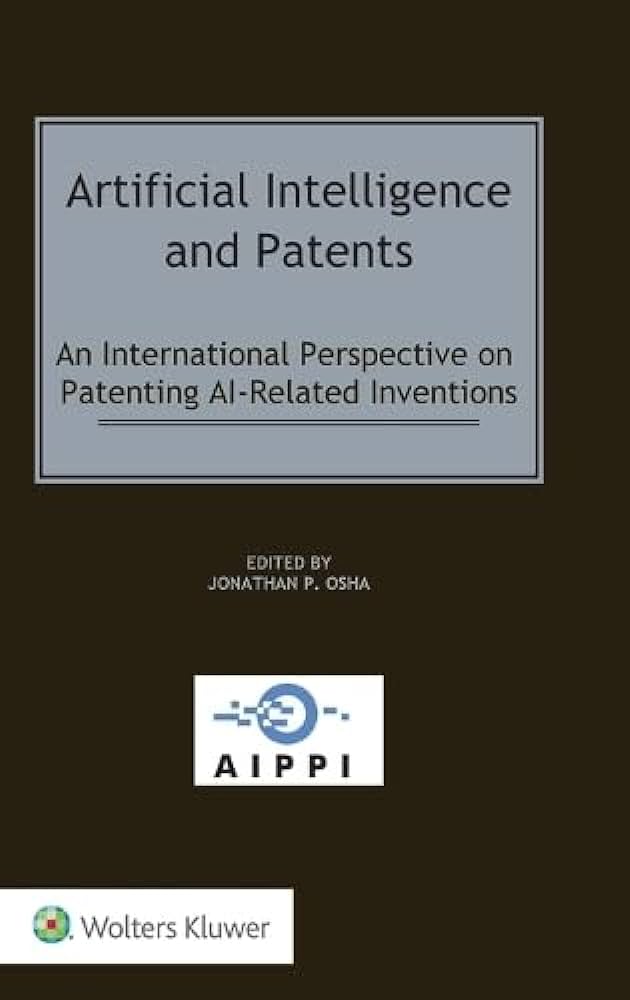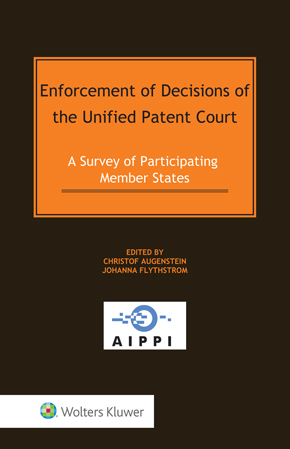Moderna secured a double victory in the Patents Court last week (2 July 2024) in proceedings against Pfizer and BioNTech. In the first decision, Meade J found its modified mRNA patent to be valid and infringed by Pfizer and BioNTech’s “Comirnaty” vaccine. In the second decision, Richards J rejected Pfizer and BioNTech’s defence based on the “pledge” given by Moderna in 2020 that it would not enforce its COVID-19 patents against those making vaccines intended to combat the pandemic (later updated by Moderna to limit it to 92 low- and middle-income countries). This follows Moderna’s success at the EPO in May 2024, where the Opposition Division upheld the same patent in amended form despite a negative preliminary opinion. Conversely, the District Court of The Hague in the Netherlands found the patent to be invalid for lack of novelty in a judgment from December 2023.
Moderna was less successful in relation to the second patent in the proceedings, which relates to a betacoronavirus mRNA vaccine formulated in a lipid nanoparticle. That patent was found to be obvious and invalid for added matter (in line with the EPO Opposition Division’s finding of added matter in December 2023). However, given the financial relief at stake for infringement of the first patent (Pfizer/BioNTech’s Comirnaty vaccine is reported to have generated worldwide sales of over USD 75 billion since the beginning of 2021), this is clearly a big win for Moderna, subject to the findings of any appeal.
The decision by Richards J is the first decision worldwide to consider the impact of Moderna’s “pledge” in 2020 and update in March 2022 and addresses Pfizer and BioNTech’s arguments based on both the law of Massachusetts on unilateral contracts and US federal law on waiver of patent rights. The US infringement proceedings against Pfizer and BioNTech, which involve similar arguments, are currently on hold while the US PTO determines the validity of two of Moderna’s patents.
Overview of the proceedings
The validity and infringement trial before Meade J considered the validity of two patents, EP (UK) 3 590 949 (EP 949) and EP (UK) 3 718 565 (EP 565) owned by ModernaTx, Inc (Moderna). EP 949, entitled “Ribonucleic acids containing N1-methyl-pseudouracils”, relates to a modified form of mRNA in which the uracil bases are replaced with N1-methyl-pseudouridine (m1Ψ) and has a priority date of 1 October 2020. EP 565, entitled “Respiratory virus vaccines”, relates to a betacoronavirus mRNA vaccine in which the antigenic polypeptide is a spike (S) protein or subunit or an immunogenic fragment thereof and formulated in a lipid nanoparticle (LNP) and has a filing date of 21 October 2016 (entitlement to priority having been challenged and conceded by Moderna shortly before trial).
Infringement was not in issue as Pfizer/BioNTech effectively admitted that, if valid, both EP 949 and EP 565 were infringed by Comirnaty. Moderna did not seek injunctive relief in the proceedings, but sought damages or account of profits for any acts of infringement by Pfizer and BioNTech (together, Pfizer/BioNTech) for any acts of infringement that took place from the date on which Moderna’s “pledge” was updated in March 2022.
The second trial before Richards J addressed Pfizer/BioNTech’s defence based on Moderna’s statement on 8 October 2020 that, for so long as the pandemic continued, it would not enforce its COVID-19 patents against those making vaccines intended to combat the pandemic.
Validity of EP 949
Moderna sought to defend claims to mRNA with 100% of the uracil bases replaced by m1Ψ, and which comprised an additional structure called a “PolyA tail”. Pfizer/BioNTech had challenged EP 949 for anticipation by a patent application, WO 2007/024708 A2 (UPenn), and for obviousness over UPenn or a paper by 2023 Nobel Laureate Katalin Karikó (Karikó 2008). Insufficiency had also been pleaded by Pfizer/BioNTech but this was not pursued at trial. Both the lack of novelty and obviousness attacks were dismissed by Meade J.
In relation to Pfizer/BioNTech’s primary anticipation argument based on the combination of information from a number of examples of UPenn, although UPenn disclosed techniques for replacing uracil bases in mRNA, including one paragraph referring to replacement with m1Ψ, the Judge held that m1Ψ was either not an individualised disclosure or, even if it was individually disclosed, it was only one compound in a long list with no particular indication that it was preferred. To anticipate EP 949, m1Ψ would need to be combined with one of a number of mRNAs disclosed in a different example, with no pointer to that particular mRNA. In relation to Pfizer/BioNTech’s secondary anticipation argument based on various paragraphs and the definition of “pseudouridine” in UPenn, the Judge held that the proposed route to the claims involved a process of research and deduction plugging in aspects of the CGK and there was no clear direction to replace 100% of the uracil bases in an mRNA strand. The Judge noted that his decision differed from that of the Court of The Hague, which had found UPenn to anticipate the claims, but put this down primarily to the different evidence (particularly expert evidence) available before him.
On obviousness, the parties agreed that the skilled person would have found the results in UPenn to be very promising and of real interest. Pfizer/BioNTech submitted that, having read UPenn, the skilled person would have decided to explore other nucleotide modifications, especially those similar to pseudouridine, which would lead them to m1Ψ. The Judge rejected this, noting that UPenn did not specifically point towards using pseudouridine derivatives such as m1Ψ, nor did it give any particular explanation as to why pseudouridine had apparently worked so well in the examples. The approach proposed by Pfizer/BioNTech’s expert was “one of blind trial and effort with no idea of what is likely to succeed or why, uninformed by any concrete expectation of success and without any incentive or some immediate practical application”. Additionally, a prominent review article on pseudouridine in RNA taught away from the use of m1Ψ. The substitution with m1Ψ would therefore not be obvious to the notionally skilled person at the priority date. The Judge noted that Karikó 2008 overlapped significantly with UPenn, even it took the form of a review article rather than a patent application, and did not include any material differences. He therefore dealt with it briefly in the judgment and took largely the same approach to obviousness.
Validity of EP 565
Pfizer/BioNTech challenged EP 565 for lack of novelty and obviousness over Moderna’s WO2015/164674 patent application (WO 674). They also argued that EP 565 was invalid for added matter, for which the EPO’s Opposition Division had invalidated the patent in December 2023.
There were a number of disputes in relation to the common general knowledge (CGK) for EP 565. One centred on whether betacoronaviruses were considered viable vaccine targets at the filing date, which Moderna had contested on the basis that other diseases would be more promising targets. The Judge found that the evidence painted an “extremely clear picture” that post-SARS-CoV and MERS-CoV outbreaks, betacoronaviruses were recognized as significant vaccine targets with a high risk of future outbreaks and this was widely known within the vaccine community at the filing date. Moderna also argued that the material relied upon to show the interest in developing coronavirus vaccines only referred to established platforms and did not extend to RNA vaccines. However, although the state of the CGK was that existing efforts on coronavirus vaccines were directed to established platforms, that did not mean it was CGK that they would continue to be limited to these platforms. The CGK also indicated that there was unlikely to be any difficulty in applying LNPs in the context of mRNA vaccines, and that the spike (S) protein or subunit had been used as the target antigen and had elicited neutralising antibodies with protective effect in test animals.
For the purpose of assessing both novelty and added matter, the relevant claims were divided into a ‘functional’ feature (the requirement for mRNA to be a vaccine, i.e. to generate an antigen-specific immune response) and ‘physical’ features (all the other features of the relevant claims). Pfizer/BioNTech had run a squeeze between added matter and novelty, arguing that if all the features were disclosed by the application as filed (to avoid added matter), they must also be disclosed by WO 674 (rendering the patent invalid for lack of novelty). Moderna’s position in its closing submissions was that both WO 674 and the application as filed disclosed all the physical features but only the application adequately disclosed the functional feature. However, the Judge concluded that neither the application as filed nor WO 674 adequately disclosed all the physical features together. The result was that EP 565 was not anticipated by WO 674 but was invalid for added matter (consistent with the decision of the Opposition Division).
In relation to obviousness, notably neither side structured its submissions by reference to the Pozzoli approach that is generally (but not always) followed by the English courts and requires a stepwise approach to the identification of the skilled person, the CGK, the inventive concept of the claim and any identification of differences between the state of the art and that inventive concept before determining whether such differences required any degree of invention. The Judge agreed that the approach would not have worked well in this case as the main attack was based on a particular example (Example 20) of WO 674 and Moderna did not say that the invention lay in the physical differences between Example 20 and the claims (the details of the LNP formulation) but in the decision to proceed with an mRNA vaccine for MERS-CoV starting from Example 20. In light of the finding on the CGK regarding the attractiveness of a coronavirus vaccine and the teaching in WO 674 that MERS was “a key vaccine”, Example 20 provided a clear direction towards developing a MERS mRNA vaccine based on the S protein using the LNP platform, and this was not undermined by the availability of other targets and platforms. The Judge therefore reached the “clear conclusion” that EP 565 was obvious over WO 674.
Impact of Moderna’s “pledge”
In the second trial, Richards J considered the impact of the “pledge” given by Moderna in October 2020, which included the following wording:
“…Beyond Moderna’s vaccine there are other COVID-19 vaccines in development that may use Moderna patented technologies. We feel a special obligation under the current circumstances to use our resources to bring this pandemic to an end as quickly as possible. Accordingly, while the pandemic continues, Moderna will not enforce our COVID-19 -related patents against those making vaccines intended to combat the pandemic. Further, to eliminate any perceived IP barriers to vaccine development during the pandemic period, we are also willing to license our intellectual property for COVID-19 vaccines to others for the post-pandemic period…”
Moderna issued a further statement in March 2022, which stated:
“…To underscore our commitment to low-and middle-income countries, Moderna is now updating our patent pledge to never enforce our patents for COVID-19 vaccines against companies manufacturing in or for the 92 low- and middle-income countries in the Gavi COVAX Advance Market Commitment (AMC), provided that the manufactured vaccines are solely for use in the AMC 92 countries.
[…]
In non-AMC 92 countries, vaccine supply is no longer a barrier to access. In these countries, the Company expects those using Moderna-patented technologies will respect the Company’s intellectual property. Moderna remains willing to license its technology for COVID-19 vaccines to manufacturers in these countries on commercially reasonable terms….”
Pfizer/BioNTech’s case was that the “pandemic period” according to the “pledge” continued until 5 May 2023, when the Emergency Committee advised the World Health Organisation (WHO) that COVID-19 no longer constituted a public health emergency of international concern (PHEIC) and that during that period Moderna had consented to acts that would otherwise constitute infringement under s60(1)(a) of the Patents Act 1977 (Patents Act). Pfizer/BioNTech argued that this consent was irrevocable, either because it had resulted in a binding unilateral contract under the law of Massachusetts that precluded Moderna from enforcing the patents against Pfizer/BioNTech until the pandemic ended or because the 2020 statement amounted to a partial waiver of Moderna’s patent rights that took effect under US federal law.
The Judge noted that the 2020 statement gave little guidance on when the pandemic could be said to come to an end. He rejected Moderna’s submission that the pandemic period would come to an end on a country-by-country basis when vaccine supplies ceased to be a barrier to vaccination access; the natural reading of the statement was that it covered the period during which COVID-19 represented a problem for the whole world and was made at a time when it was unclear whether vaccines would be either effective or widely available. He also rejected Pfizer/BioNTech’s argument that the statement would be read to mean that the pandemic period would end when the WHO determined that the PHEIC had come to an end. If required to choose, he preferred Pfizer/BioNTech’s analysis but concluded that this was not necessary. The 2020 statement was identified in the text as a “forward-looking statement” that was neither a promise not a guarantee. The Judge held that it would be read as a statement of Moderna’s intention at that time and Moderna reserved the right to change its mind in the future and enforce its patents, even during the pandemic period. He also accepted Moderna’s argument that the later statement in 2022 communicated a clear intention that it would enforce its patents against any unlicensed person manufacturing vaccines for use other than in AMC 92 countries, which was supported by contemporaneous statements.
In addressing the question of whether Moderna had consented to Pfizer/BioNTech’s infringing acts, the Judge noted that the facts on which Pfizer/BioNTech were entitled to rely included matters of foreign law, including whether consent has been given under s 60 of the Patents Act by a contract governed by foreign law. This was not contrary to the Rome I or Rome II Regulations and he saw no reason to preclude Pfizer/BioNTech from arguing that a unilateral contract had been formed under the law of Massachusetts that precluded Moderna from enforcing its COVID-19 related patents during the pandemic period. He found Pfizer/BioNTech’s arguments based on waiver of patent rights under US federal law more difficult as having no clear bearing on the English law question of consent (and where English law does not have the same concept of waiver of rights as US federal law) but considered the argument nonetheless.
The Judge concluded that the 2020 statement was inconsistent with an objective intention that Moderna be bound by a contractual promise not to enforce patents during the pandemic and there was therefore no offer that was capable of being accepted as part of a unilateral contract under Massachusetts law. In case he was wrong on that point, he went on to consider whether there was acceptance or any consideration given by Pfizer/BioNTech. On the evidence before him on the law of Massachusetts, it was unclear what was required to demonstrate acceptance of a unilateral offer and which party would have the burden of proof in this regard, however even if there was a presumption in Pfizer/BioNTech’s favour on this point, that presumption was clearly rebutted as Pfizer/BioNTech were already making vaccines and had entered into contracts to deliver such vaccines before Moderna made its offer. Pfizer/BioNTech had also admitted in the proceedings that they did not advance a case that they had acted or relied on or were induced by Moderna’s 2020 statement and had not communicated to Moderna that they would be carrying out actions on the basis of the statement. The Judge considered that Pfizer/BioNTech had provided no consideration for the same reasons.
The Judge also gave short shrift to Pfizer/BioNTech’s argument that Moderna’s had waived its patent rights under US federal law. Pfizer/BioNTech had argued that Moderna had irrevocably waived the right to sue addressees of its promise not to enforce patents during the pandemic period. On the evidence before the Judge, US federal courts had analysed such temporary forbearances to sue as conferring some legal rights on the addressee of the promise under doctrines of implied licence, or legal or equitable estoppel (each of which require some sort of reliance by the addressee and had been abandoned by Pfizer/BioNTech before the trial) but there was no US federal authority in which such temporary forbearance to sue amounted to a waiver of patent rights. The Judge concluded that the 2020 statement was at most a temporary forbearance to sue that did not constitute an express waiver of rights. Even if the 2020 statement included an express waiver of rights under US federal law, it was validly retracted by Moderna’s 2022 statement.
The Judge’s ultimate conclusion was that Pfizer/BioNTech had non-contractual consent to perform otherwise infringing acts under s60 of the Patents Act from the date of Moderna’s 2020 statement until such consent was revoked by the 2022 statement. There was no unilateral contract between Moderna and Pfizer/BioNTech under Massachusetts law that rendered Moderna’s consent irrevocable and even if, contrary to the Judge’s finding, there had been a waiver of rights under US federal law, it would not as a matter of English law render the consent irrevocable. Pfizer/BioNTech’s defence therefore failed.
Impact
Last week’s decisions have clearly shifted the pendulum in Moderna’s direction in the ongoing global COVID-19 litigation and open the door to a potentially huge windfall for Moderna if they are successful on any appeal. Beyond the immediate dispute, the validation of Moderna’s patent to foundational mRNA technology may also have implications for others in the mRNA field.
It will be some time before we learn the details of any appeal, however. Meade J’s decision directs that the form of order hearing in the case (from which the time for seeking permission to appeal will begin to run and which should normally take place within 28 days of the days of the handing down of the judgment) will not take place until September so the parties will have some time to mull over their strategy during the summer vacation.
Further down the line, we have the decisions of the German, Belgian, Irish and US courts to look forward to, along with any appeal decisions in the Netherlands and by the Technical Board of Appeal of EPO. It will be interesting to see if they take similar approaches to validity and the impact of Moderna’s “pledge”.
More from our authors:

|
Vissers Annotated European Patent Convention 2024 Edition by Kaisa Suominen, Nina Ferara, Peter de Lange, Andrew Rudge € 105 |

|
The Unitary Patent and the Unified Patent Court, Second Edition by Pieter Callens & Sam Granata € 176 |

|
Artificial Intelligence and Patents: An International Perspective on Patenting AI-Related Inventions by Jonathan P. Osha € 174 |

|
Enforcement of Decisions of the Unified Patent Court: A Survey of Participating Member States by Christof Augenstein and Johanna Flythstrom € 123 |